Located in the heart of London in downtown Westminster, instantly-recognisable Buckingham Palace is the primary residence of the reigning British monarch and symbol of the Royal Family. Kings and queens of the realm have called the palace home since 1837, and though it’s seen countless changes, damage and renovations over the years, the sprawling complex’s position as a central cog in the British monarchy has remained undimmed.
Featuring no fewer than 775 rooms and the largest private garden in London, opulent Buckingham Palace really is a residence fit for a king - and his entourage. Over 800 staff work at the Palace, while more than 50,000 guests are invited each year to attend a plethora of receptions, parties, banquets and other events of state on the site. Over half a million tourists too, flock in pilgrimage annually to glimpse the glittering halls where the pomp, pageantry and drama of the world’s most famous royals plays out. Buckingham Palace is one of the English capital’s must-visit sites, and an obligatory stop on any tour of London. Discover more about this magnificent royal residence with us!
The Palace gets its name from the Duke of Buckingham…
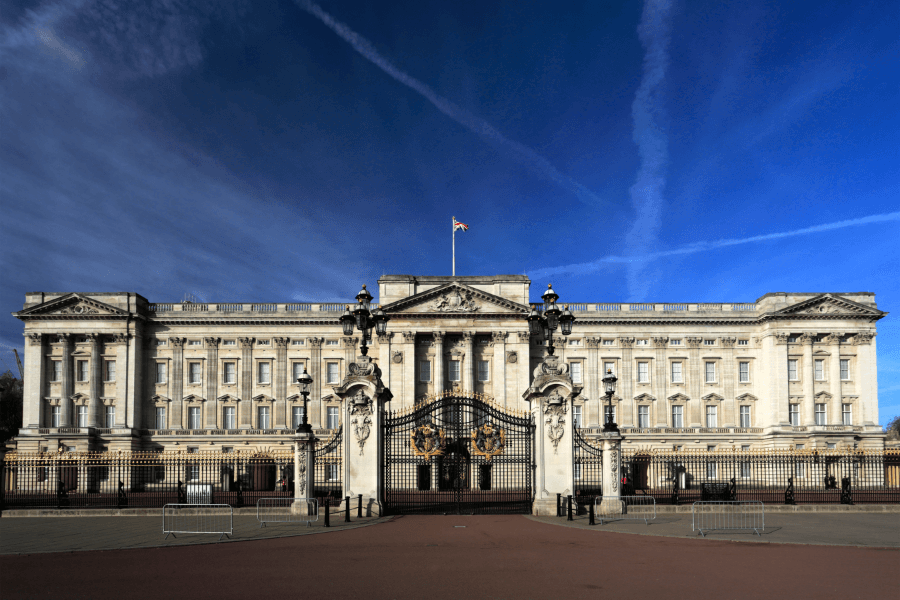
Although these days Buckingham Palace is synonymous with the British Royal Family, it didn’t start out life as a property of the monarchy. The palace was in fact built by John Sheffield, the Duke of Buckingham and Normanby (it’s from him that the building gets its name) in 1703. The thrice-married Duke was a somewhat eccentric character whose fortunes rose and fell numerous times during the tumultuous political climate of late-16th-century England.
Dismissed from court after an ill-advised marriage suit aimed at the young Princess Anne in 1682, he was welcomed back into the fold on the accession of King James II, only to fall on hard times once again after the Catholic king was deposed in the Glorious Revolution. Fortune’s wheel turned in Sheffield’s favour once more when Princess Anne (who remained well-disposed towards him) rose to the throne as Queen Anne and appointed him the 1st Duke of Buckingham and Normanby. To mark his newly elevated status, the Duke built a glamorous three-storey townhouse for himself near St James’ Park, designed by architect William Winde. Buckingham died here in 1721.
But Queen Victoria made it the official royal residence

Buckhingham’s illegitimate son Charles Sheffield sold his father’s pile for the not inconsiderable sum of £21,000 in 1761 to King George III, who intended to transform the house into a private retreat for his wife, Queen Charlotte. Charlotte spent much of her time here as her husband descended into mental illness, and it became known as the Queen’s House. When her son ascended to the throne as George IV, he set about renovating and expanding the residence, work continued by his successor William IV.
It would not be until Victoria took the throne in 1837, however, that Buckingham Palace would finally become the primary residence of the British Royal Family. Victoria and her husband Albert expanded the palace dramatically, and would live here together for the remainder of the married life; Albert died in 1861, and the grief-stricken queen largely withdrew from public life, preferring the privacy of Windsor and Balmoral to the bustle of London. A large memorial taking the shape of a winged victory across the road from the palace is dedicated to Queen Victoria, recognising her pivotal role in the elevation of Buckingham Palace to a world-famous symbol of the British monarchy.
The renowned architect John Nash renovated the palace
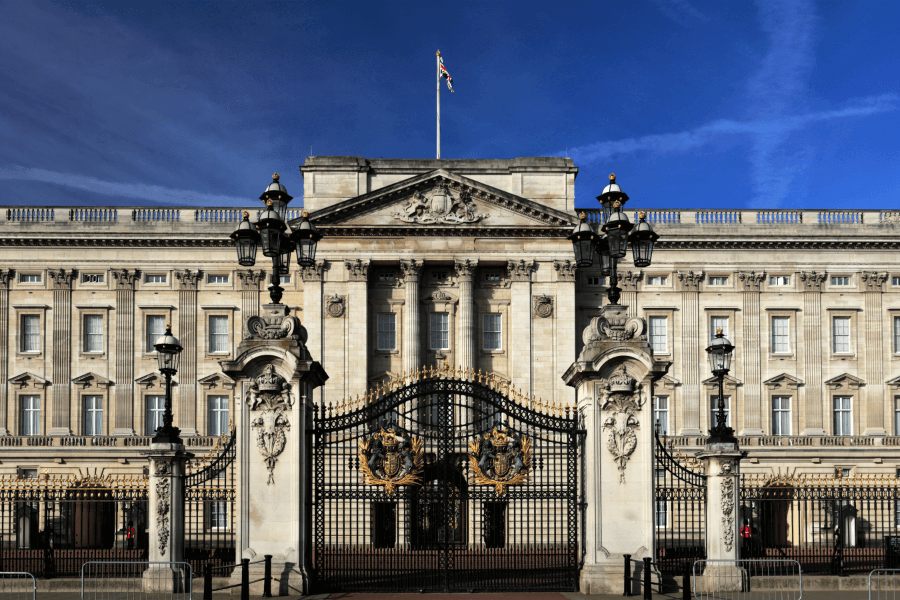
Many architects had a hand in the renovations and expansions that ultimately transformed Lord Buckingham’s townhouse into a palace fit for a king, but one name stands above the rest. John Nash, already one of the nation’s most renowned architects and famous for his extraordinary designs such as Brighton Pavillion and Regent’s Street, began redesigning the building at the behest of George IV in 1826. Nash’s neo-classical principles perfectly suited the refined, French-influenced aesthetic taste of the king, and it’s to Nash that we owe the iconic eastern front facade facing The Mall, with its distinctive Corinthian colonnade.
Although the king was delighted with Nash’s designs, he was less enamoured of the spiralling costs associated with them. Nash was ultimately fired, and Edward Blore was drafted in to complete the works in a more cost-effective way. Subsequent monarchs and architects continued to make alterations and improvements to the palace. Sir Aston Webb was responsible for significant changes in the early 20th century, including the refacing of the eastern facade in Portland stone and the addition of the famous central balcony where the Royals frequently appear to their adoring public.
The opulent State Rooms are the heart of Buckingham Palace
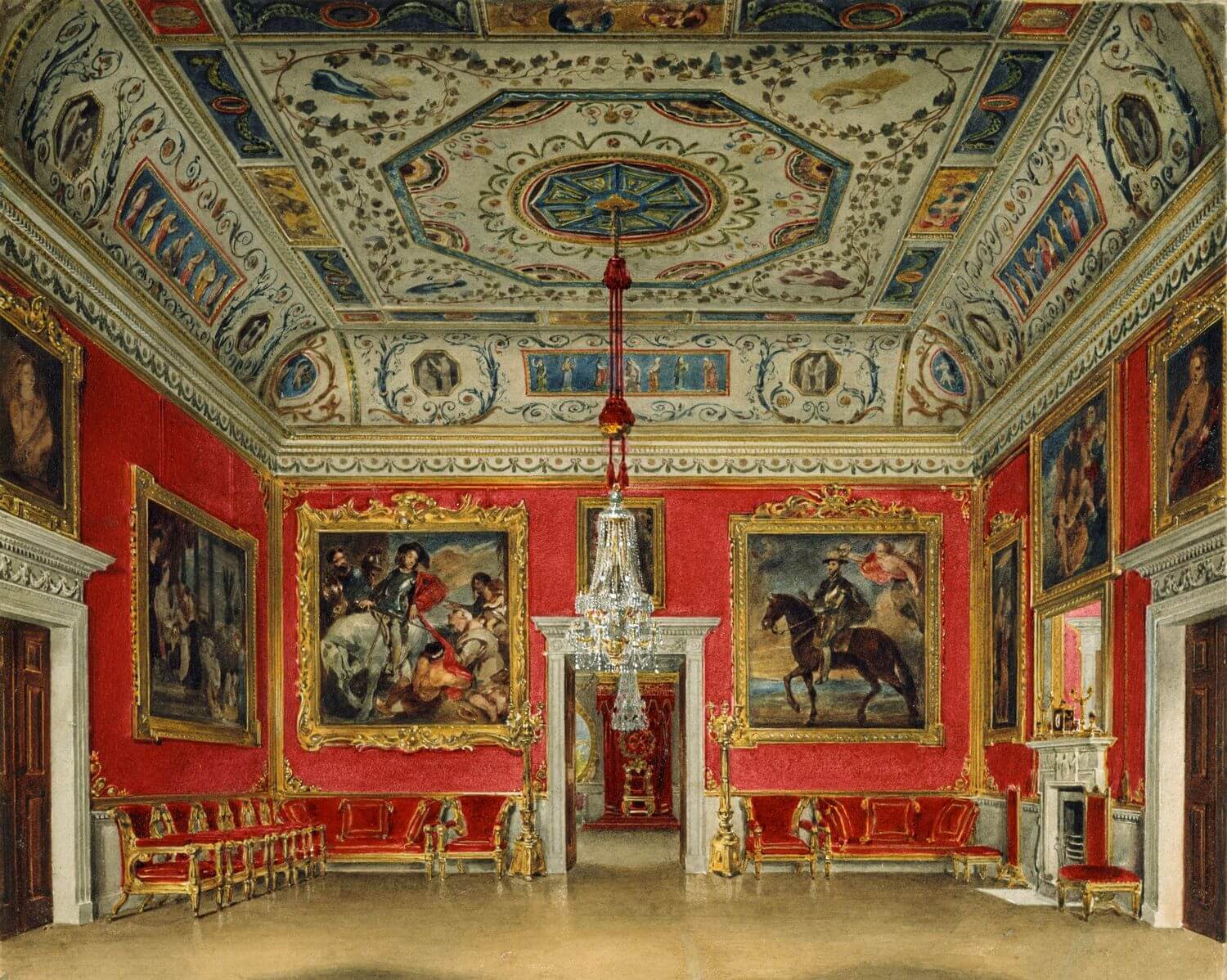
The State Rooms of Buckingham Palace are a set of 19 grand ceremonial rooms that are used by the British monarchy for various official functions, and are known for their opulent decor. Notable amongst the suite of rooms is the Grand Ballroom, used for state banquets, investiture ceremonies, and other formal events, the Throne Room, with its twin thrones - the typical location for official portraits - and The White Drawing Room.
Other important spaces include the spectacular Grand Staircase, key site for ceremonial entrances to the palace, and the Picture Gallery, home to some of the finest Old Masters in the Royal Collection including paintings by Vermeer, Van Dyck and Rubens. More masterpieces can be viewed in the nearby Queen’s Gallery, near the Royal Mews.
You can visit the state rooms for ten weeks each summer on a tour of Buckingham Palace when the Royals aren’t residing there. But how do you know if the king and his family are at home or not? There’s an easy way…
If the Royal Standard is flying, it means that the king is in residence

If you want to know who’s at home at Buckingham Palace, it’s enough to look up at the flags flying high over the building. When the Royal Standard is flying above Buckingham Palace, it signifies that the reigning monarch is in residence. This flag features the royal coat of arms and is used exclusively by the monarch. The design consists of a shield divided into four quadrants, each representing the historical kingdoms that made up the United Kingdom: England (with its three lions) features twice; the other quadrants represent Scotland (with its rampant red lion), Ireland (with its harp - whose continuing inclusion on the Royal Standard is somewhat controversial since Ireland's indepedence in 1922). If the king isn’t in residence, then you won’t see the Royal Standard, as it can only be flown in the presence of the monarch. In its place is the Union Flag (widely known as the Union Jack).
The Changing of the Guards takes place outside Buckingham palace
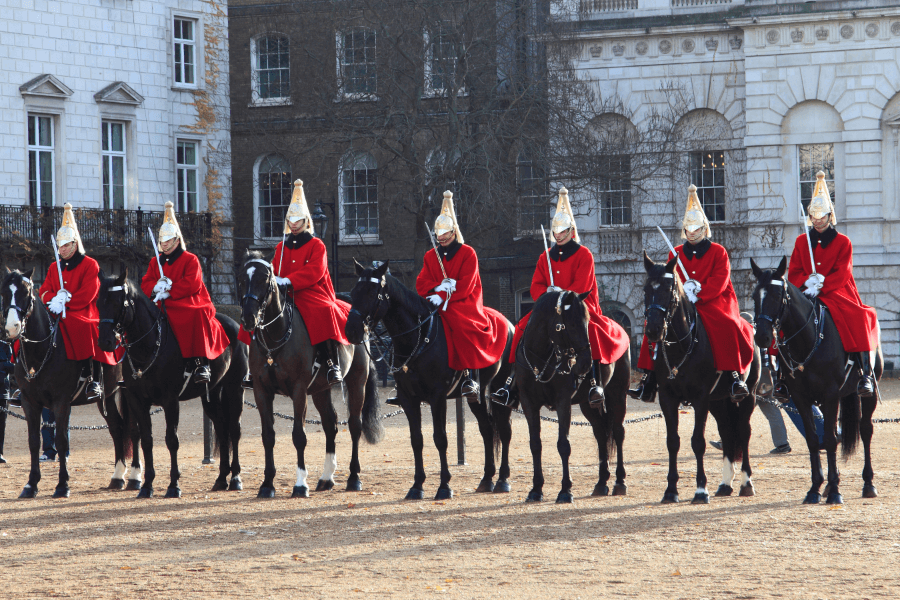
No visit to London is complete without watching the famous Changing of the Guard ceremony, which takes place inside the gates of Buckingham palace in the building’s forecourt every morning in the summer and on alternate mornings the rest of the year sometime between 10 and 11 am. This highly symbolic ceremonial event marks the transfer of responsibility for guarding the palace from one group of soldiers to another, and is taken very seriously indeed by the regiments involved. As the handover takes place, the guards march and drill in perfect lockstep to the accompaniment of military music, as throngs of visitors look on.
But who exactly is involved in the ceremony? The Changing of the Guard in fact involves several regiments of the British Army, whose participation varies according to a rotating roster. The main regiments that participate in the ceremony are part of the Household Division, a group of elite regiments responsible for guarding the monarch and royal residences.
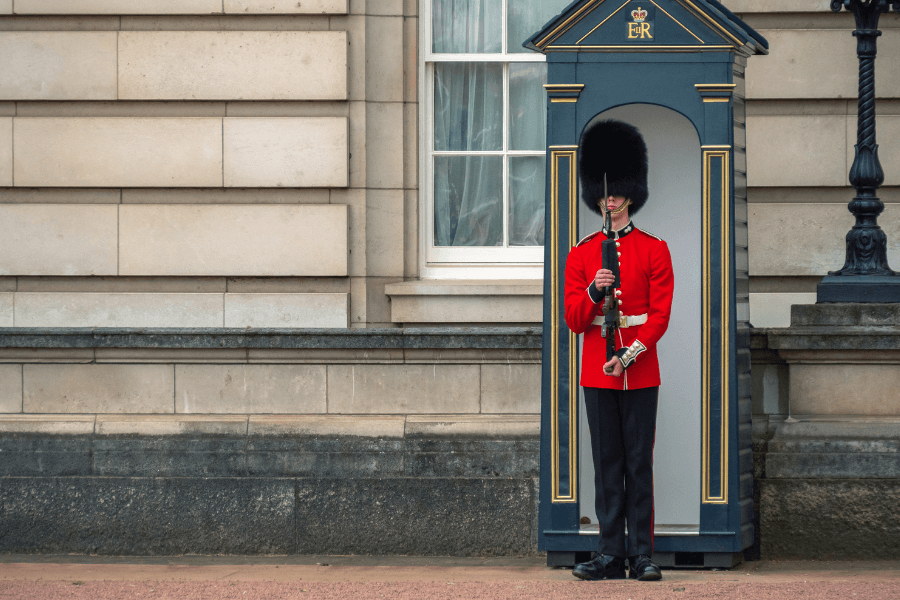
The specific regiments that take part in the Changing of the Guard at Buckingham Palace include the Grenadier Guards, the oldest regiment of Foot Guards recognizable by their red tunics and distinctive bearskin hats; the Coldstream Guards who also wear red tunics and bearskin hats; the Scots guards, whose Scottish heritage is referenced in their kilts; the Irish Guards, who sport green tunics and bearskin hats with a shamrock on the chin strap, and finally the The Welsh Guards, who wear a leek emblem on their collars and buttons.
In addition to the Foot Guards, the Household Cavalry also plays a role in the Changing of the Guard. The Life Guards and the Blues and Royals, two regiments within the Household Cavalry, provide the mounted sentries that stand watch outside Buckingham Palace. The specific regiment on duty is often announced in advance, so visitors can check the official schedule to see which regiment will be participating during their visit to Buckingham Palace.
The palace is famed for its security - but there have been breaches
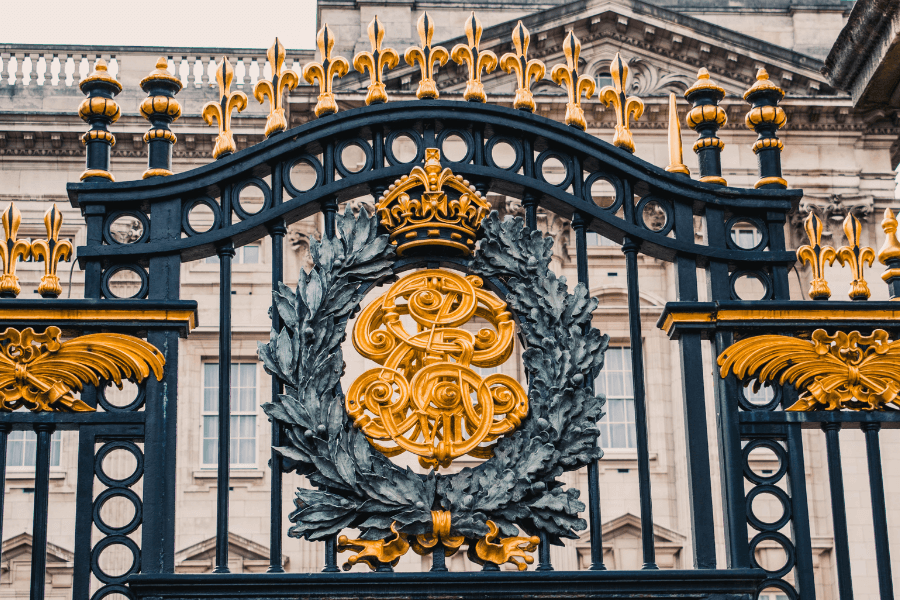
As you can imagine security at Buckingham Palace is extremely extensive, providing multiple layers of protection to ensure the safety of the British monarch and the palace itself. The security measures in place include a combination of physical barriers - not least amongst them the iconic black wrought-iron gates that guard the main entrance on the Mall, surveillance systems, and highly armed security personnel. Nonetheless, there have been some high-profile breaches in the past, most famously in the case of Michael Fagan in 1982. As immortalised in the Netflix hit series The Crown, disaffected painter-decorator Fagan managed to break into the palace twice over the course of a few months.
The first time, in June 1982, Fagan managed to gain access via a drainpipe, and spent half an hour eating cheese and crackers and swigging wine below stairs before fleeing after being startled by a chambermaid. The security guards disbelieved the maid’s story, allowing Fagan to make another attempt to break-in to the palace early one morning the following month. This time things went even more smoothly for the intruder, and Fagan even managed to enter the Royal Apartments, entering the Queen’s bedroom and waking her. Security was slow to arrive, leaving the two alone for some time before the intruder was apprehended and removed - what, if anything, was said between them remains a mystery!
Through Eternity Tours offer a range of expert-led itineraries in London. Explore historic Westminster including Buckingham Palace and see the city through the eyes of a local on our Best of London tour.



